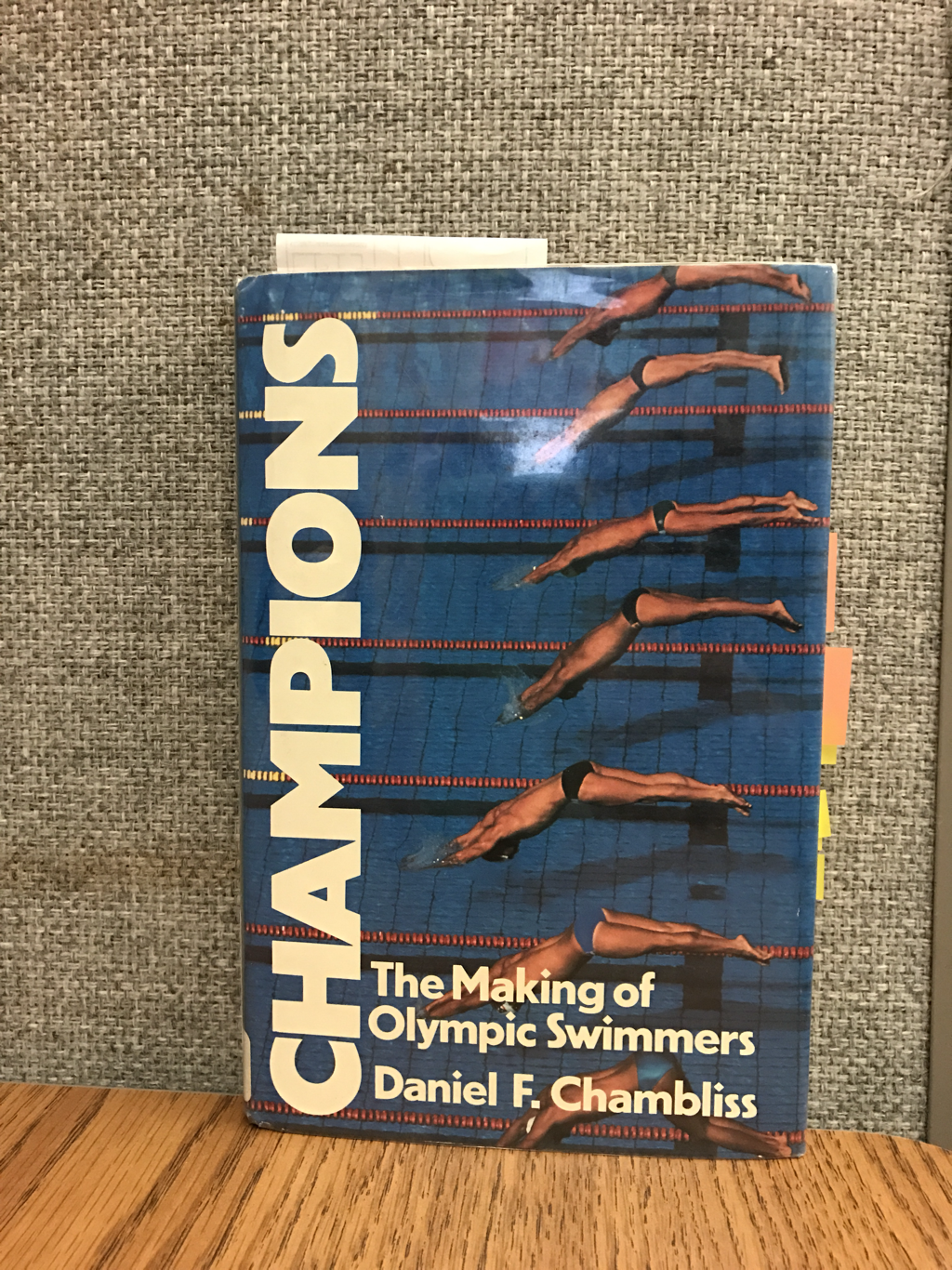|
A few months ago I came across a research article titled The Mundanity of Excellence: An Ethnographic Report on Stratification and Olympic Swimmers, by Dr. Daniel F. Chambliss. If I would have came across this article two years ago, I probably would have focused my dissertation research on something along these lines, with a emphasis on throwers in track & field. A couple of weeks ago, on my way back from an early childhood education meeting in Albany, I contacted Dr. Chambliss to see if I could meet with him on my way back to Rochester. To my delight, he agreed to give me an hour of his time. Dr. Chambliss is a distinguished professor of Sociology at Hamilton College, located in Clinton, NY. It is about a two hour drive from Rochester. I was more nervous than anything when we met. It was my first time speaking to someone who had such an interest in Olympic athletes as I do. In 1988, Dr. Chambliss published a book titled Champions: The Making of Olympic Swimmers. If you have not read this book, and are interested in Olympic level performance, you need to. A link to purchase his book can be found here www.amazon.com/gp/offer-listing/0688076181/ref=tmm_hrd_used_olp_sr?ie=UTF8&condition=used&qid=1488309791&sr=8-15 One of the first questions I asked Dr. Chambliss was about how he got the idea to research Olympic swimmers. He told me he was a local club swimming coach in Clinton, and was recently hired by Hamilton College. As is with most colleges/universities, professors are required to have a certain amount of publications within a certain amount of years before being granted tenure. He spoke to his then dean and inquired about learning more about the development of Olympic Swimmers. At the suggestion of his dean, rather than write the Mission Viejo Nadadores Swim Club a letter asking about the research opportunity, his dean told him to, "just show up." And off he went. We also spoke about buy-in and getting the most out of your athletes. Dr. Chambliss shared with me that he and then assistant coach were going to tell their current athletes and families that they would be traveling to a major competition within the next three to six months, and that they would bring anyone on the team that made the qualifying times. At the time they suggested this to their athletes and families, not one of the athletes on the team had hit the qualifying times. Well, in that short amount of time, about eight athletes had indeed qualified. Dr. Chambliss simply told me they raised the expectations of the team by suggesting they would be going to a bigger meet with better competition. His athletes became more enthusiastic about training, and quickly qualified for the major competition. That concludes Part I of my two part series on my first meeting with Dr. Chambliss. Check back next week when I publish post two on our meeting at Hamilton College. As always, thanks for reading.
My best, Charles
0 Comments
Leave a Reply. |
Dr. Charles InfurnaCharles Infurna, Ed.D., is the owner and lead coach of Forza Athletics Track Club. Dr. Infurna has coached National Record Holders, National Champions, All-Americans, and Conference Champions at the Post-Collegiate, Collegiate, and High School level. Archives
January 2023
Categories |


 RSS Feed
RSS Feed